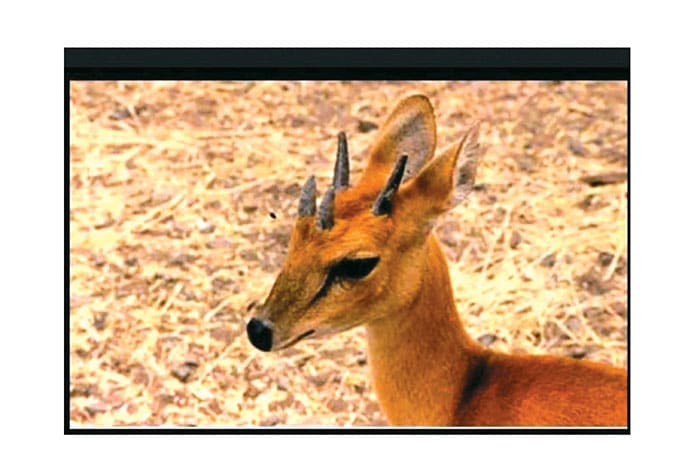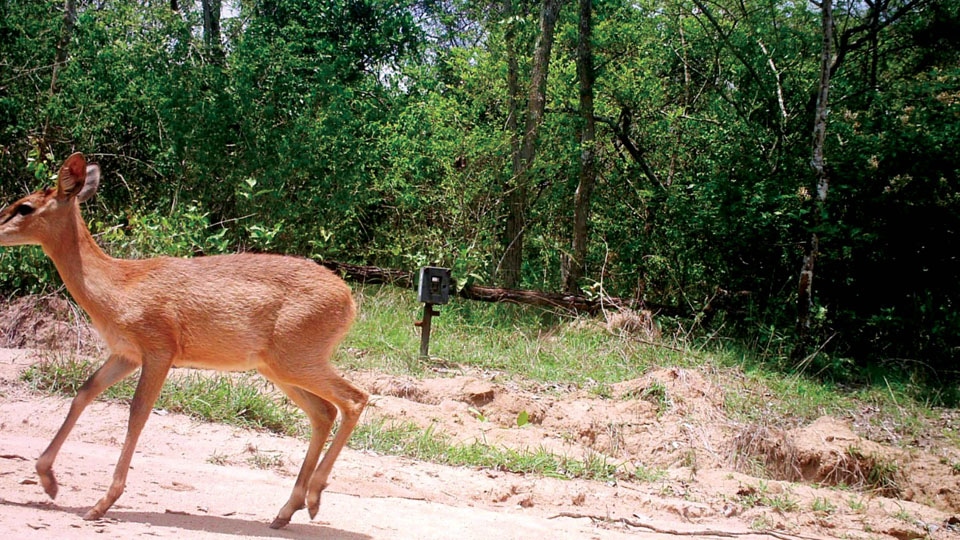Hanagod: A rare Four-Horned Antelope (Tetracerus quadricornis), which is on the verge of extinction, has been ‘camera trapped’ at Veeranahosahalli Range in Nagarahole Reserve Forest about 10 days ago.
Also known as Chousingha in Hindi, this animal is one of the smallest Asian Bovids on the verge of extinction. The Four-Horned Antelope is classified as ‘Vulnerable’ by the International Union for the Conservation of Nature and Natural Resources (IUCN).
These antelopes have four horns, which distinguish them from other bovids, which have two horns. A slender body with thin legs and a short tail, their coat is yellowish brown to reddish in colour. Antelopes inhabit areas with significant cover from grass or heavy undergrowth. They feed on grass, herbs, shrubs, foliage, flowers, fruits and stay close to water bodies as they need to drink water frequently. They try to stay away from human-inhabited areas as they are very shy.
While one pair of horns is located between the ears, the other pair is on the forehead. The posterior horns are always longer than the anterior horns.

Most of the populations are in India and lower numbers can be found in adjoining Nepal. In Karnataka, they are spotted at Sandur Forest range in Ballari district.
Though solitary by nature, these bovids may form loose groups of three to five — with one or more adults, sometimes accompanied by juveniles.
Adult antelopes mark vegetation in their territories with a secretion of pre-orbital glands and communicate with the help of submissive display which consists of shrinking the body, lowering the head and pulling the ears back.
These animals usually don’t use alarm calls to alert others because they try to avoid the attention of predators. However, in extreme cases, these calls may be used to warn predators that they have been identified.








Recent Comments